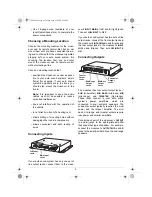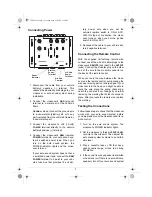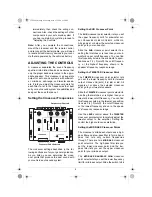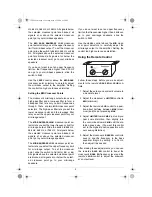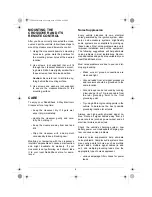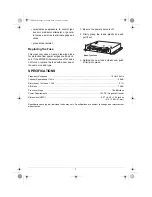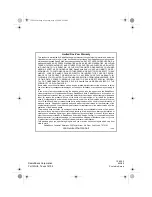
OWNER’S MANUAL — Please read before using this equipment.
©
2000 RadioShack Corporation. All Rights Reserved.
RadioShack and RadioShack.com are trademarks
used by RadioShack Corporation.
4-Way Electronic Crossover
Your RadioShack 4-Way Electronic Cross-
over lets you get the best sound from your
auto sound system. It takes the full audio
range and splits it up into four smaller rang-
es. High frequencies are sent to the tweeters'
amplifier, middle-range frequencies are sent
to the mid-bass and mid-range speakers'
amplifier, and low frequencies are sent to the
subwoofer’s amplifier.
Since each speaker only gets the frequen-
cies that it handles best, overall sound quali-
ty improves. The crossover even lets you
adjust the specific frequency ranges that
each speaker receives to precisely match its
capabilities.
The crossover's features include:
Remote Control — lets you adjust the sub-
woofer output level and boost the cross-
over’s
BASS EQ
frequency level.
Subwoofer Equalizer — lets you set the
bass equalizer to 30–100 Hz.
Mid-Bass, Mid-Range, and Tweeter (High-
Range) Controls — let you adjust the mid-
bass, mid-range, and tweeter output levels.
Crossover Point Selectors — let you set
the frequency limits for the subwoofer, mid-
bass, mid-range, and tweeter.
Automatic Power On — the crossover turns
on when you turn on the vehicle's auto sound
system (when it is connected to a switched
power lead).
Low Input Selector — lets you select one-
line or two-line input to match your auto
sound system's line output.
A complete auto sound system using this
crossover should also include:
• a receiver/CD player/cassette deck that
has line-level outputs
• any combination of one subwoofer, two
mid-bass speakers, two mid-range
speakers, and two tweeters
• a separate power amplifier for each
speaker type or a power amplifier with
multiple input channels
INSTALLATION
You can easily connect this crossover. How-
ever, improper connections can damage
your crossover and other components in
your auto sound system and possibly your
vehicle's electrical system. Before you install
your crossover, read all the installation in-
structions in this owner's manual and follow
them carefully.
Before you begin, you should know which
wire is the power wire in your vehicle's elec-
trical system and be sure your auto sound
system has line-level outputs.
Notes:
• Use audio patch cables with phono-type
connectors (available at your local
RadioShack store) to complete the
input/output connections.
• Be sure to correctly match the input and
output connections' polarity (left output
to left input, and right output to right
input).
12-2020.fm Page 1 Tuesday, May 23, 2000 6:56 PM


